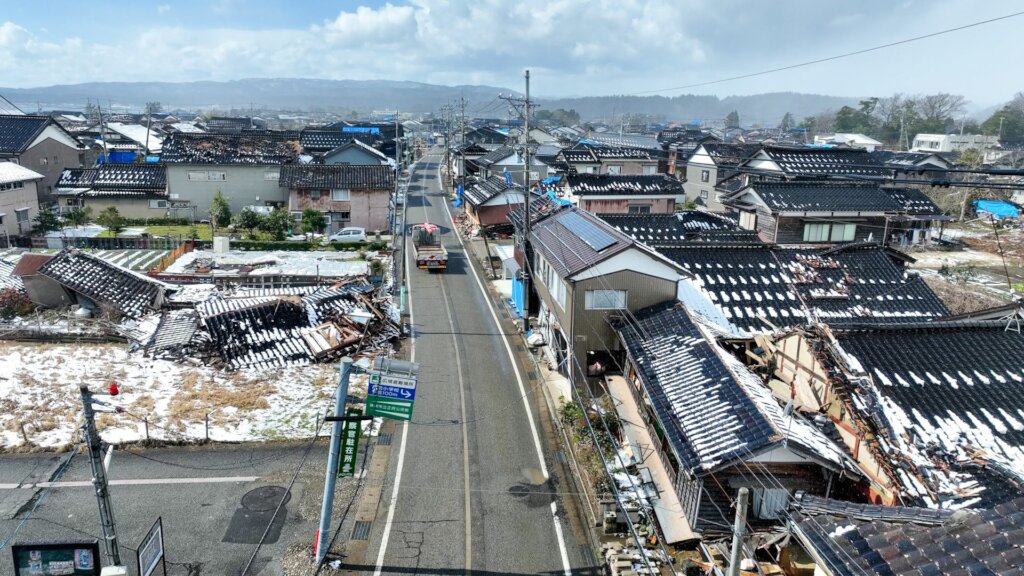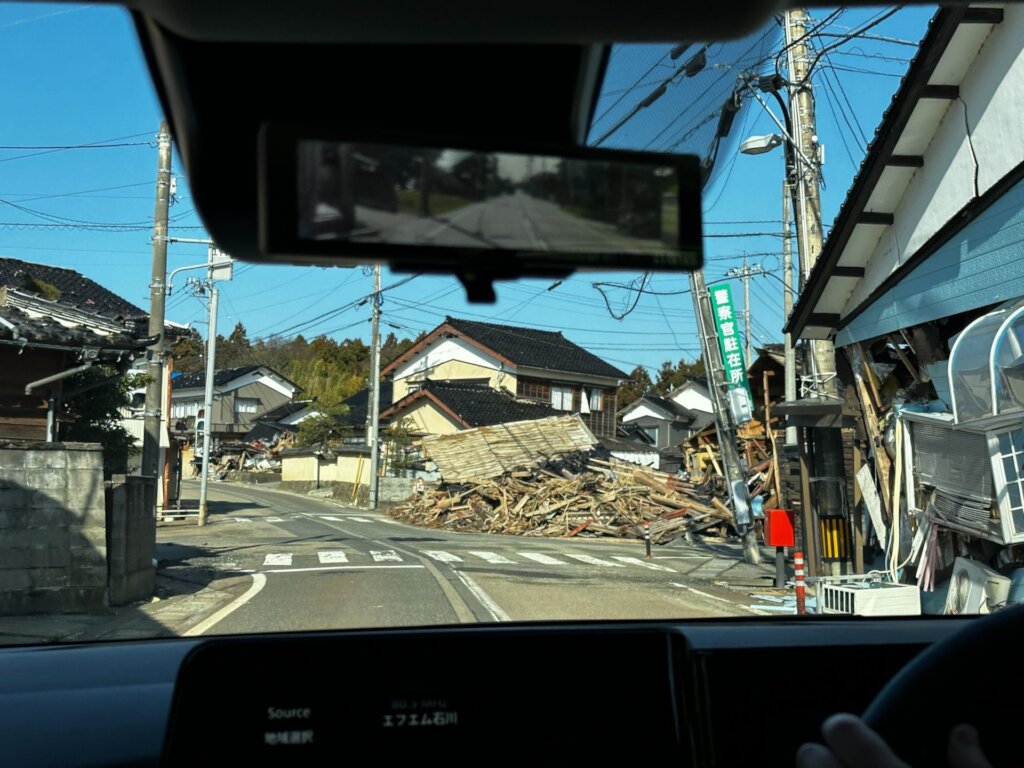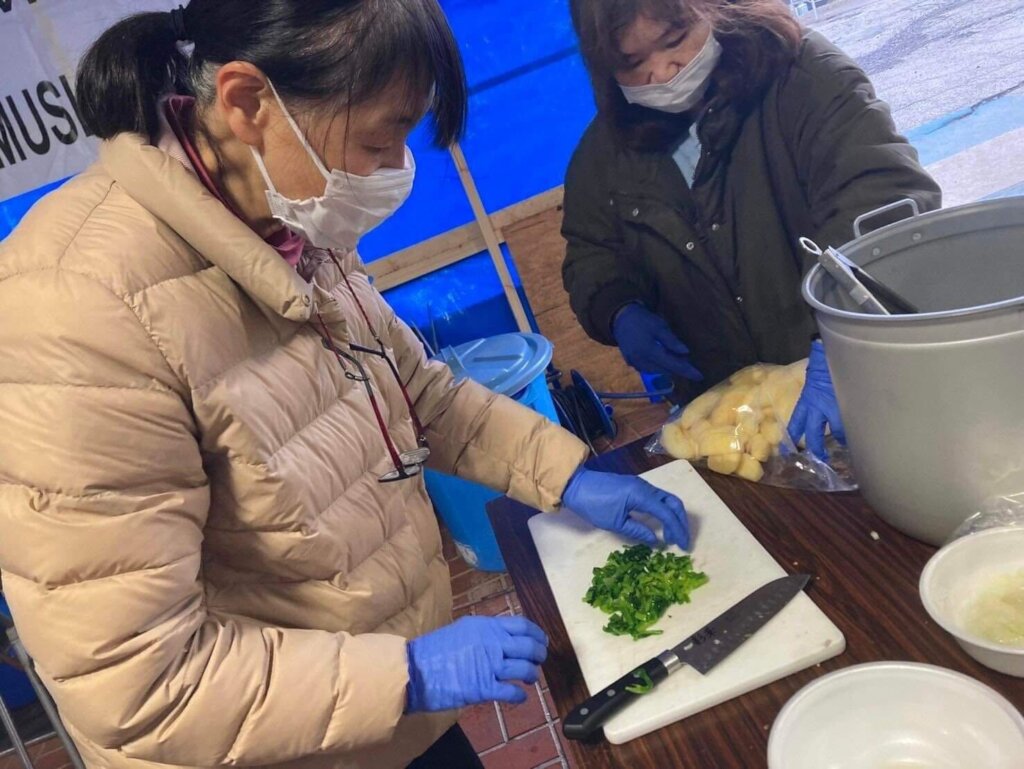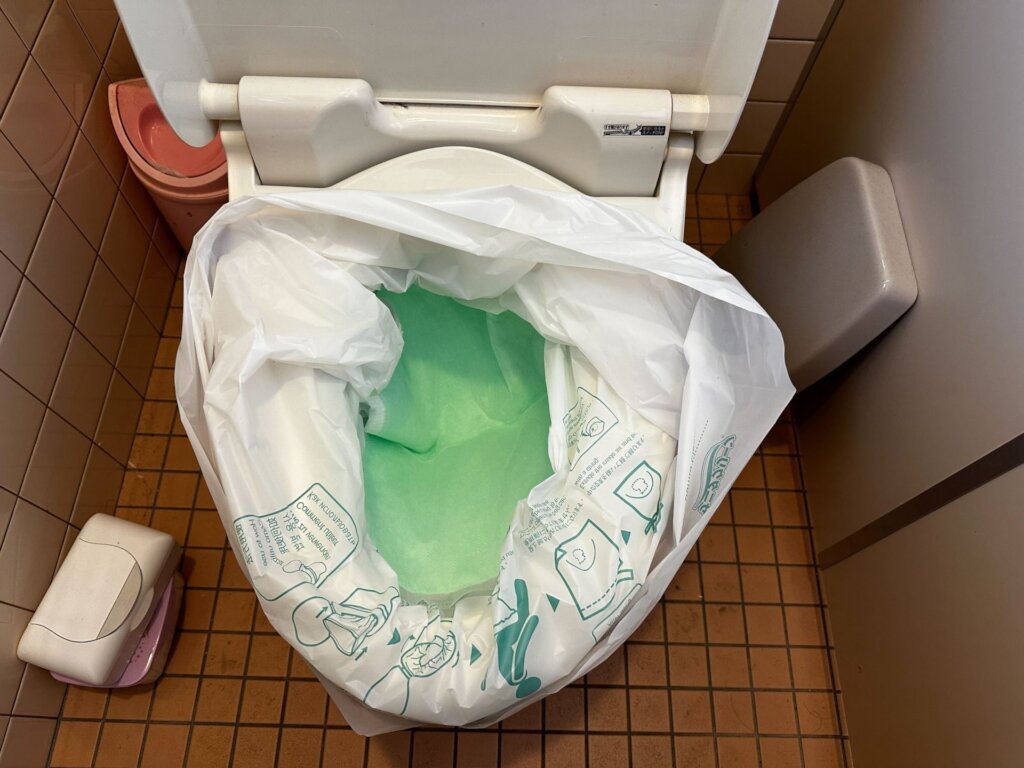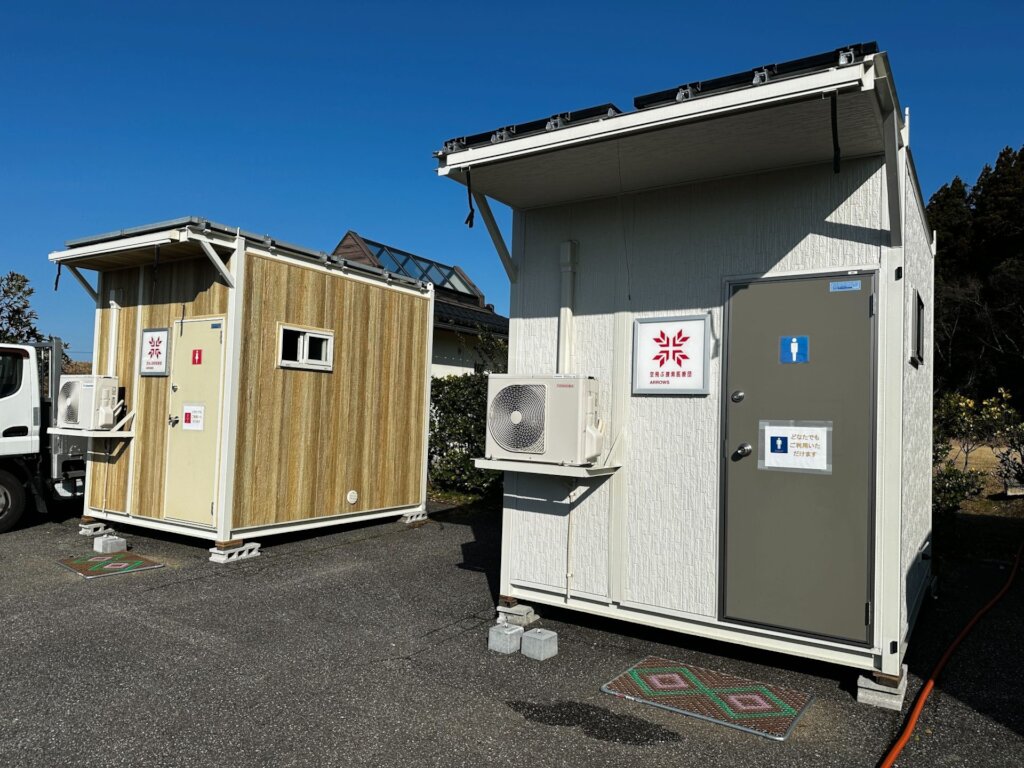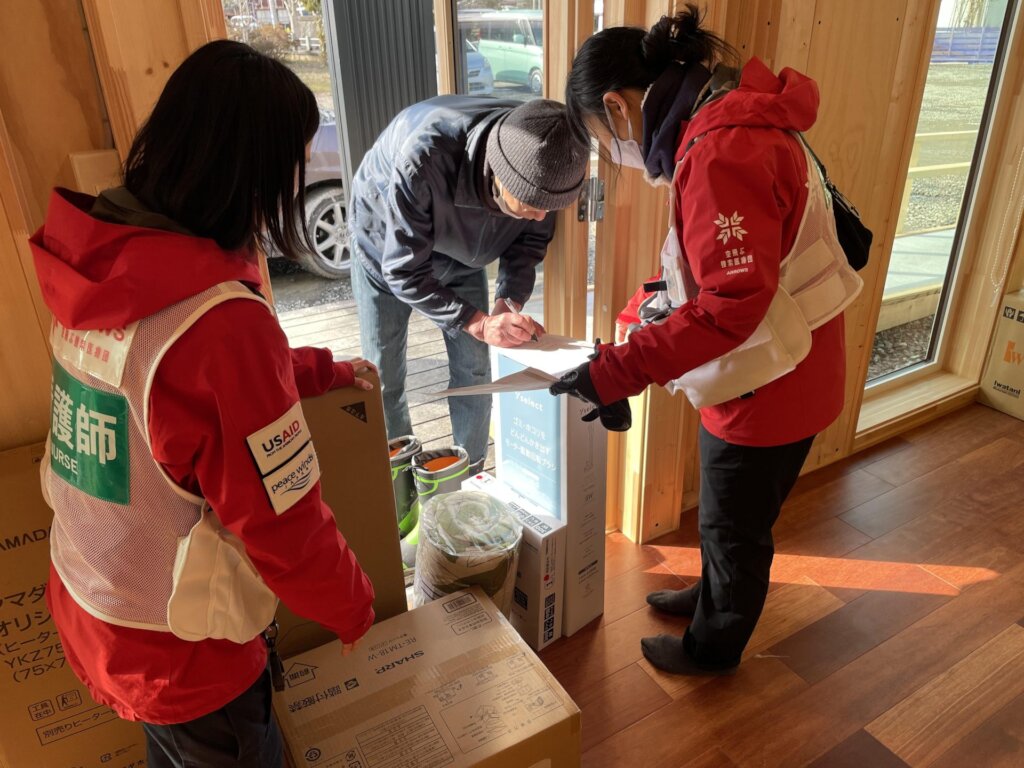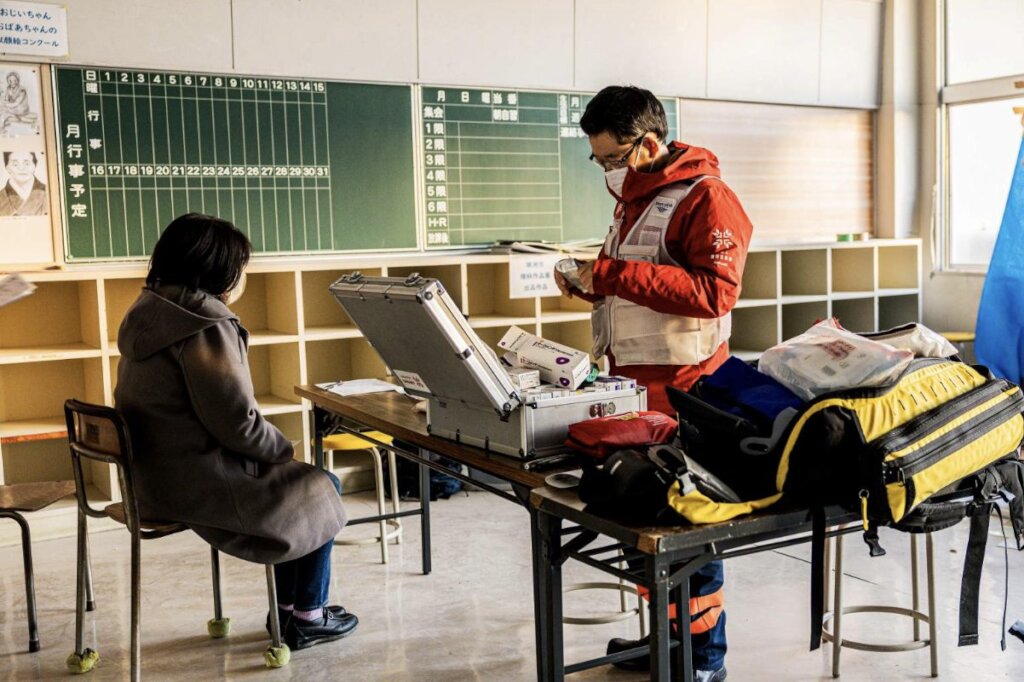By Sarah Maraschky | Communications Associate
Three months have passed since a 7.6 magnitude earthquake struck Japan’s Noto Peninsula on New Year’s Day, killing more than 240 people and leaving tens of thousands without homes, water, electricity, and other basic necessities. Peace Winds’ airborne emergency response team, ARROWS, has been on the ground aiding survivors in and around Suzu City since the earthquake struck. Although the situation in Ishikawa Prefecture has stabilized and improved since January 1, thousands of people are still living in crowded shelters, and the road to recovery will likely continue for several years. Peace Winds is collaborating with a number of organizations throughout Japan to meet the ongoing needs of survivors.
One condition that has improved for Ishikawa Prefecture in the last three months is the roads, especially for long-distance ground transportation. Many roads were severely damaged in the earthquake, and the drive from Kanazawa, the largest major city south of the peninsula, to Suzu City on its northern tip, took six hours rather than the typical two and a half. Now, this road has been restored, and it is possible to travel between the cities in about three hours. Although some roads are still closed or the number of lanes or speed limits have been reduced, it is now much easier for support vehicles and aid workers to reach areas in need. Road restoration also means that mail and package delivery to Suzu City has largely resumed.
On the other hand, Shoko Hashimoto, head of ARROWS’ field activities, points out that the “water problem” has made this response particularly difficult. About 4,800 homes in Suzu were left without running water in the wake of the earthquake. While water was restored in some areas by mid-March, three months on, most homes still do not have running water. This extended period without running water is something that Ms. Hashimoto says she has never experienced before, even after years of working in disaster relief in Japan. The process of restoring water service for the entire city will take time because it not only involves repairing the city’s water and sewage systems but also the indoor plumbing of each home.
Toilets are one component that has been greatly affected by the lack of running water. Many evacuees are using “portable toilets,” which are bags designed to line traditional toilets and be thrown out with the waste. Although disaster toilet kits have been distributed to evacuation centers throughout the area, they are used up quickly and are in short supply. Other earthquake survivors are using temporary, mobile restrooms that have been set up outside temporary shelters. Having to trek outside to the temporary toilets in the rain and snow, or in the pitch dark, adds to the psychological burden on many residents, especially elderly.
As life in temporary shelters continues, baths and showers for evacuees present another challenge. With the water that ARROWS began supplying to Suzu City on January 5, private companies and the Japanese military have been working to offer free showers and baths to evacuees. The baths are set up just like traditional Japanese onsen (public baths) with washing areas and a large tub in the center. While they are a welcome solution, the temporary baths that require waiting one’s turn in a tent and walking back in the cold are quite different from the kind many people are used to having in their homes.
Food security in Suzu City also remains a challenge, especially with the lack of access to tap water. Evacuation center staff and volunteers are working to cook meals for evacuees with food that has been gathered from around the country. However, their ability to wash dishes, utensils, and fresh fruits and vegetables is limited. ARROWS is helping to relieve some of this burden by delivering fruits and vegetables that don’t need to be washed, and by making arrangements to distribute meals prepared by food trucks.
In the past three months, a number of convenience stores, drug stores, and grocery stores have reopened in Suzu City after being deemed safe from collapse or major earthquake damage. Unfortunately, there are often not enough products in stock to accommodate everyone, and the shelves of bento boxes and premade meals are usually empty by lunchtime.
Aid organizations like Peace Winds are careful to consider the impact on the local economy when delivering assistance after a disaster like this; providing all items free of charge can undercut small businesses as they begin to reopen. Now that the local economy is beginning to move forward little by little, Peace Winds is thinking about the well-being of the entire region and is careful to focus on supply distribution where it is most needed. Our teams will continue to monitor this situation to ensure that business owners are able to rebuild along with the rest of the community.
The current housing situation for earthquake survivors varies throughout Ishikawa Prefecture. More than 1,000 people are still living in evacuation centers. Some Suzu residents were able to move into temporary housing from the beginning of February, while construction of temporary housing is yet to begin in other areas. As they begin to move into temporary housing, earthquake survivors are in need of a number of household items, including small appliances, kitchenware, and cooking utensils. ARROWS teams have been working to distribute sets of these items to families in need.
In addition to in-kind support, ARROWS staff continue to provide medical care to earthquake survivors in need. Our teams will remain on the ground working to meet the evolving needs of the Noto community. These will likely include economic revitalization, community-building, and grief care as well as everyday necessities.
Peace Winds’ earthquake relief activities in Suzu City are possible in large part due to contributions from our donors. We are deeply grateful for your continued support.
Project reports on GlobalGiving are posted directly to globalgiving.org by Project Leaders as they are completed, generally every 3-4 months. To protect the integrity of these documents, GlobalGiving does not alter them; therefore you may find some language or formatting issues.
If you donate to this project or have donated to this project, you can receive an email when this project posts a report. You can also subscribe for reports without donating.
Support this important cause by creating a personalized fundraising page.
Start a Fundraiser